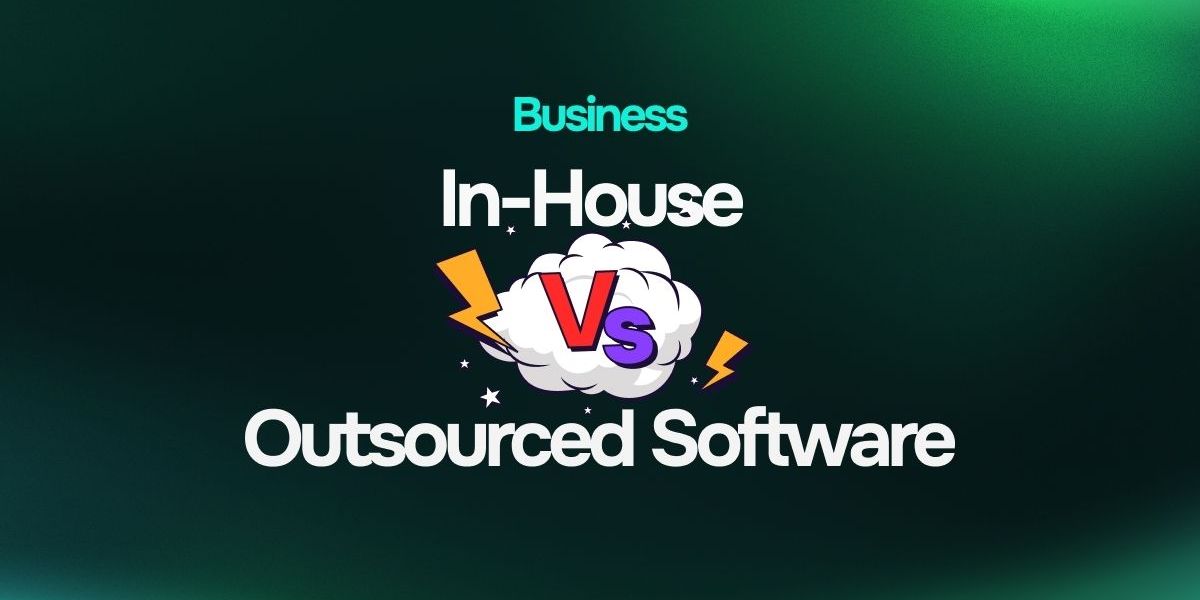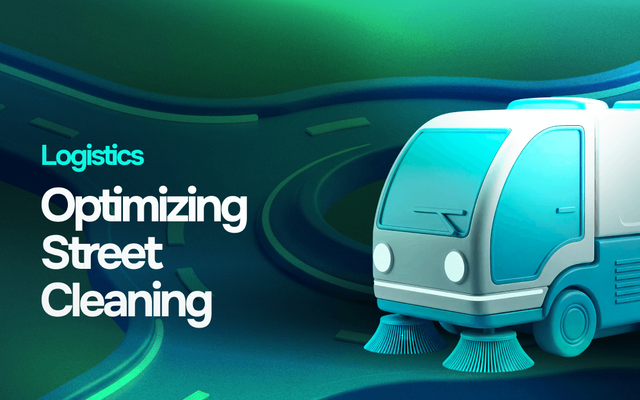
The conference room fell silent. The CTO had just presented two options for building their new customer portal: assemble an in-house team or partner with a development agency. Both approaches promised different benefits and challenges. The CEO looked around the table. "We need to get this right. Our customers are waiting, our competitors are moving, and we have limited resources. Which path do we take?"
This scene plays out in companies daily. The choice between in-house vs outsourcing software development isn't just a technical decision—it's a strategic one that directly impacts your timeline, budget, product quality, and competitive position. Make the wrong choice, and you could face months of delays, budget overruns, or a product that misses the mark.
This article walks through the key considerations to help you make this critical decision with confidence, based on your unique business context and goals. Whether you're leaning toward in-house software development vs outsourcing or still weighing all options, these insights will guide you toward the right choice for your specific situation.
Building from Within: The In-House Development Approach
In-house software development means building and maintaining software using employees who are directly on your payroll. These developers work exclusively for your company, whether physically in your office or remotely as part of your distributed team.
With in-house development, you're responsible for hiring, training, managing, and retaining these technology professionals. They become integrated into your company culture, participate in your established workflows, and develop deep knowledge of your business goals and challenges over time.
The Power of Proximity: Benefits of Building an Internal Team
Complete Control and Alignment — With an in-house team, you maintain direct control over priorities, work methods, and quality standards. Your developers focus solely on your needs without juggling multiple clients, creating deeper alignment with business goals.
Enhanced Communication and Collaboration — When your development team works alongside business teams, communication flows naturally. Questions get answered faster, misunderstandings are caught earlier, and cross-functional collaboration becomes seamless.
Knowledge Retention and Long-Term Vision — In-house teams build institutional knowledge that stays within your company. Developers develop insights beyond documentation, creating continuity for complex systems where understanding the "why" behind decisions is crucial.
Increased Security and IP Protection — For projects with sensitive data or proprietary algorithms, in-house development provides stronger security controls and intellectual property protection with complete oversight of code access.
The Reality Check: Challenges of the In-House Approach
Higher Fixed Costs — Building an internal team means significant fixed costs: salaries, benefits, training, equipment, and licenses. Unlike outsourcing's flexible expenses, in-house teams represent ongoing financial commitments regardless of current workload.
Difficult Scaling and Staffing — Expanding capacity requires time-consuming recruitment and onboarding. In competitive markets, this process can take months, potentially delaying projects. Reducing capacity when workloads decrease creates difficult personnel decisions.
Limited Expertise Breadth — Even talented teams face knowledge gaps when projects require specialized skills. Maintaining capabilities across all potentially relevant technologies becomes prohibitively expensive for most organizations.
Management Overhead — In-house teams require substantial leadership attention for hiring, performance management, and team dynamics. This management overhead diverts focus from core business activities, particularly challenging for smaller organizations.

Bringing in the Specialists: The Outsourcing Development Approach
Outsourcing software development involves contracting with external parties—whether agencies, consulting firms, or individual freelancers—to handle your development needs. These external teams or individuals aren't your employees but are engaged through service agreements to deliver specific outcomes.
Outsourcing comes in several forms, including project-based contracts (fixed deliverables), dedicated teams (external developers working exclusively for you), and staff augmentation (adding external resources to your existing team). The common thread is that these developers remain employees of another organization, not yours.
The differences between in-house vs outsourcing software development go far beyond just who signs the paychecks. They fundamentally change how work gets done, how communication flows, how quickly you can adapt, and how knowledge accumulates within your organization.
The Outside Edge: Benefits of Partnering with External Teams
Access to Specialized Expertise — Outsourcing partners maintain specialists across numerous technologies and domains. This gives you precise expertise for specific needs without the long-term commitment of hiring specialists full-time, especially valuable for niche skills or emerging technologies.
Cost Flexibility and Efficiency — Outsourcing converts fixed costs into variable expenses that scale with your actual needs. This flexibility preserves capital and reduces financial risk, eliminating overhead costs like benefits, facilities, equipment, and ongoing training.
Accelerated Development Timelines — Established outsourcing partners can mobilize experienced teams faster than you can hire them. These partners bring predefined workflows and collaboration tools that would take months to establish internally.
Focus on Core Competencies — For many organizations, software development supports their business but isn't their primary expertise. Outsourcing allows you to concentrate leadership attention on your core business while leveraging external technical expertise.
The Distance Dilemma: Challenges of the Outsourcing Approach
Reduced Direct Control — When outsourcing, you're buying outcomes rather than controlling day-to-day activities. You have limited visibility into how work gets done and less ability to make immediate adjustments.
Communication Barriers — External teams introduce communication friction through different time zones, potential language barriers, and unfamiliarity with your business context. These barriers necessitate more formalized communication processes.
Knowledge Transfer Challenges — External developers may develop crucial system insights that don't automatically transfer to your organization. Without careful knowledge management, you risk dependency on the outsourcing partner.
Quality and Alignment Concerns — Your software's quality ultimately depends on your outsourcing partner's standards and talent. Ensuring their approach aligns with your expectations requires careful vendor selection and relationship management.

Critical Factors to Consider in Software Development: In-House vs Outsourcing
Software development in-house vs outsourcing isn't a one-size-fits-all decision. The right approach depends on your specific context across several key dimensions.
Mission-Critical or Routine? Project Complexity and Importance
The nature of your project significantly influences which approach makes sense. Complex, mission-critical systems that represent your core business value often benefit from in-house development. The deep business knowledge, tight feedback loops, and long-term continuity of internal teams prove valuable for such projects.
Conversely, well-defined systems with stable requirements or projects using standard technologies might be excellent outsourcing candidates. The specialized expertise and efficiency of external teams can deliver these projects effectively without the long-term investment of building in-house capabilities.
Dollars and Sense: Budget and Cost Considerations
Your financial situation and how you prefer to structure costs play major roles in this decision. In-house development represents a significant upfront investment but may deliver better long-term economics for sustained development needs. This approach also gives you more predictable costs over time.
Outsourcing typically requires less initial investment and allows you to pay for development as needed. This flexibility preserves capital and reduces financial risk, particularly valuable for early-stage companies or organizations with intermittent development requirements.
When evaluating costs, look beyond hourly rates to consider the total cost of ownership for both approaches, including management overhead, knowledge transfer, quality assurance, and potential rework.
Clock's Ticking: Time to Market Pressures
When speed is critical, your existing capabilities become a decisive factor. If you already have an established in-house team with relevant expertise, they'll likely deliver faster than a new outsourcing relationship that requires knowledge transfer and relationship building.
However, if you're starting from scratch, outsourcing often delivers faster results than building an internal team. Experienced outsourcing partners can mobilize pre-assembled teams with established workflows while recruitment and team formation for in-house development typically takes months.
The in-house vs outsourcing software development decision significantly impacts how quickly you can bring products to market, especially for organizations without established technical teams.
Command and Connect: Control and Communication Requirements
Some projects demand tight control and frequent communication, particularly those with evolving requirements or deep integration with your business processes. In these scenarios, in-house teams typically offer advantages through proximity, shared context, and direct management.
Other projects have stable, well-defined requirements where outcomes matter more than the specific process. These projects may benefit from outsourcing, allowing you to focus on defining and verifying results rather than managing day-to-day execution.
Your organization's capacity for managing remote relationships also influences this equation. Companies with experience managing distributed teams will find outsourcing relationships easier to maintain effectively.
Talent Tactics: Expertise and Resource Availability
Your access to talent, both currently and for future hiring, significantly impacts this decision. Organizations in competitive technology hubs often face challenges building in-house teams, making outsourcing relatively more attractive. Conversely, companies with strong recruitment capabilities or unique appeal to developers may find in-house teams more feasible.
Additionally, consider the specific expertise your project requires. For niche or emerging technologies, outsourcing partners often provide faster access to experienced specialists than hiring these scarce resources directly.
Data Defense: Security and Compliance Requirements
For projects involving sensitive data, proprietary algorithms, or stringent regulatory requirements, security and compliance considerations become paramount. While both approaches can address these concerns with proper controls, in-house development typically offers more direct oversight of security practices.
If your industry has specific compliance requirements, evaluate potential outsourcing partners' experience and certifications in your regulatory context. The right partner may actually enhance your compliance position through specialized expertise that would be difficult to develop internally.
Best of Both Worlds: Hybrid Models for In-House vs Outsourcing Software Development
Many organizations find that a binary choice between in-house and outsourcing is unnecessarily limiting. Hybrid models offer creative alternatives that combine the strengths of both approaches.
The core-and-flex model maintains essential capabilities in-house while leveraging outsourcing for specialized needs or capacity scaling. This approach preserves control over strategic components while gaining flexibility and specialized expertise when needed.
Another effective hybrid is the build-operate-transfer model, where you begin with an outsourced team but gradually transition development in-house as your capabilities mature. This approach accelerates initial delivery while building toward long-term internal ownership.
For specific projects, splitting responsibilities between internal and external teams can prove effective. Your in-house team might handle core business logic and user experience while outsourcing infrastructure components or specialized integrations to external experts.
When considering software development in-house vs outsourcing, remember that hybrid models often provide the most practical solution for complex organizational needs.

From Theory to Action: Practical Steps to Decide on In-House vs Outsourcing Software Development
Moving from theoretical comparison to practical decision-making requires a structured approach:
Conduct a Thorough Needs Assessment: Begin by clearly defining your project goals, scope, and specific requirements. Identify which aspects are truly core to your business value and which are more standardized or supporting functions. This clarity helps determine where tight control is essential versus where external expertise might be advantageous.
Analyze Costs Realistically: Develop comprehensive cost projections for both approaches, including hidden costs often overlooked in initial estimates. For in-house development, include recruitment, training, management overhead, and potential productivity variations. For outsourcing, consider contract management, knowledge transfer, and potential rework requirements.
Evaluate Internal Capabilities Honestly: Assess your organization's current technical capabilities, management capacity for development oversight, and realistic hiring potential. This honest evaluation helps determine whether building an effective in-house team is feasible within your required timeframe.
Investigate Potential Partners: If outsourcing appears viable, thoroughly research potential partners before making commitments. Evaluate their technical expertise, experience in your domain, development processes, and cultural compatibility with your organization. Speaking with current clients provides valuable insights beyond marketing materials.
Consider Starting Small: Regardless of which approach you're leaning toward, consider starting with a smaller initiative to validate your decision. For outsourcing, this might mean beginning with a focused Product Discovery Workshop to test compatibility and strategic alignment before committing to full development. For in-house development, it could mean building a core team that demonstrates value before expanding.
The Strategic Choice Between In-house Software Development vs Outsourcing: Making the Right Decision
The decision between in-house and outsourced development ultimately depends on your specific business context, priorities, and constraints. Neither approach is inherently superior—each offers advantages and limitations that make it appropriate for different situations.
The most successful organizations approach this decision thoughtfully, considering not just immediate needs but long-term strategic implications. They recognize that this choice impacts not only project delivery but also how technology capabilities develop within their organization over time.
Many companies find that their needs evolve as they grow. What works during early stages may change as products mature and organizations develop. The most effective approach often involves periodically reassessing this decision as your business context shifts.
Whichever path you choose—in-house vs outsourcing software development—success depends on clear expectations, strong communication, and appropriate oversight. Both in-house and outsourced development can deliver excellent results when managed effectively, and both can fail when implemented poorly.
By carefully evaluating your specific needs across the factors we've discussed, you'll identify the approach that best positions your organization for successful software development both now and in the future.







